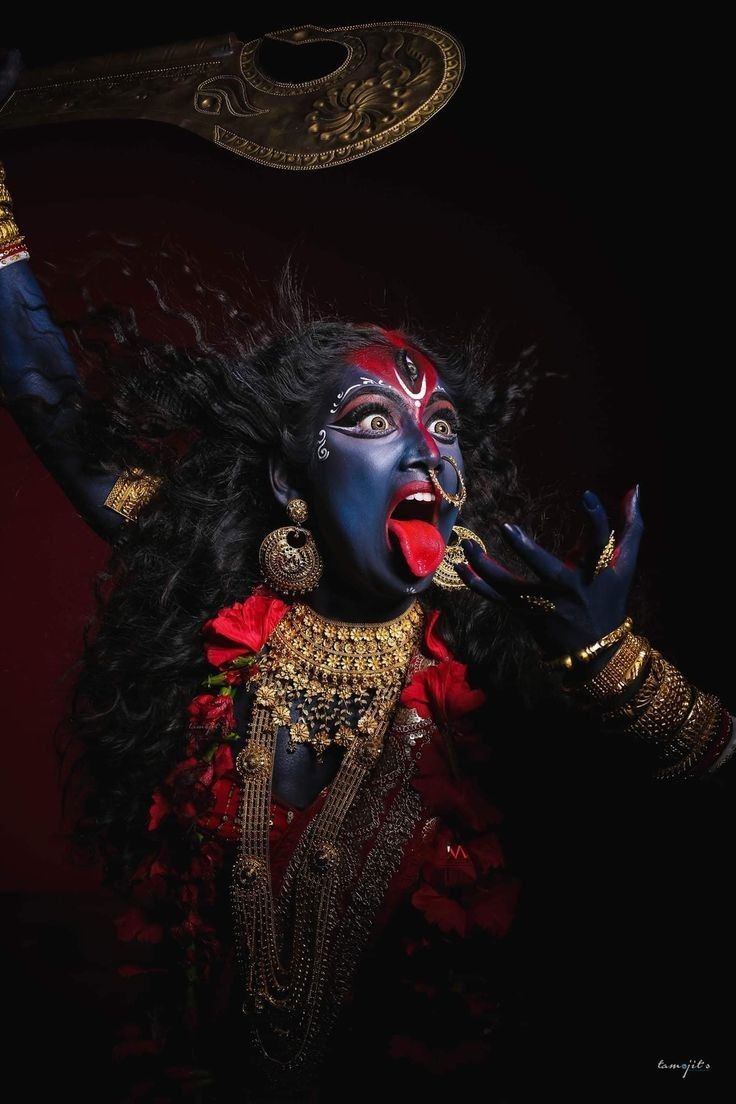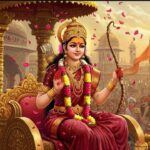5 Fierce Facts About Goddess Kali That Will Shock and Inspire You
Goddess Kali, one of the most powerful and awe-inspiring deities in Hinduism, embodies destruction of evil, transformation, and spiritual liberation. Revered as both fierce protector and compassionate mother, Kali inspires devotees to overcome fear, embrace change, and pursue spiritual growth. This article explores the history, facts, timeline, significance, FAQs, daily life impact, and societal importance of Goddess Kali in a detailed and human-friendly manner.
Kali
| Characteristics : | Destroyer, Compassionate |
| Other Names : | Bhadrakali, Rudrani, Dakshinakali, Aadya |
| Abode : | Cremation Grounds |
| Weapon : | Sword |
| Mula Mantra : | Om Kreem Kalikaye Namah |
History of Goddess Kali
Goddess Kali’s origin is intertwined with mythology, spiritual philosophy, and cultural traditions:
Vedic and Puranic Roots: Kali emerges as an aspect of Shakti, the divine feminine energy, in early Vedic references and later in Puranas.
Devi Mahatmya (c. 5th–6th century CE): One of the earliest detailed texts describing Kali’s appearance, divine wrath, and battle against demons.
Samudra Manthan Connection: In certain texts, Kali is connected with the cosmic forces released during the churning of the ocean, symbolizing transformative power.
Tantric Traditions: Worship of Kali in Tantra emphasizes spiritual liberation (moksha), meditation, and confronting fears.
Medieval Temples: Temples in Bengal, Odisha, and Assam celebrate her as the destroyer of evil and protector of devotees.
Modern Era: Kali remains a central figure in Durga Puja, Kali Puja, and Tantric practices, symbolizing both fearlessness and compassion.
Interesting Facts About Goddess Kali
Fierce Destroyer: Kali’s primary role is to eliminate evil, ignorance, and negative forces, protecting righteousness.
Compassionate Mother: Despite her terrifying appearance, she is a nurturing mother, offering spiritual guidance and blessings.
Iconography: Often depicted with black or dark blue skin, a garland of skulls, tongue out, four arms, and wielding weapons, symbolizing destruction of ego and liberation.
Associated Festivals: Worshiped during Kali Puja (Diwali in Bengal) and Navratri, emphasizing both reverence and devotion.
Symbol of Liberation: Kali teaches devotees to overcome fear, accept impermanence, and embrace spiritual growth.
Timeline of Kali Worship
Vedic Period (c. 1500–500 BCE): Emergence of Shakti worship and early references to divine feminine power.
5th–6th Century CE: Detailed descriptions in Devi Mahatmya, emphasizing her ferocity and protective nature.
Medieval Era: Temples, rituals, and festivals dedicated to Kali flourish in eastern India.
18th–19th Century: Expansion of Kali worship in Bengal and the rise of Kali Puja traditions.
Modern Era: Celebrated widely during Kali Puja, Durga Puja, and Tantric spiritual practices worldwide.
Significance of Goddess Kali
Kali holds spiritual, cultural, and societal significance:
Spiritual Power: Represents the destruction of ego, ignorance, and fear, guiding devotees toward enlightenment.
Moral Inspiration: Encourages courage, resilience, and devotion, especially in facing life’s challenges.
Cultural Importance: Central to festivals like Kali Puja and Durga Puja, shaping artistic and literary traditions.
Protection: Worshiped as a guardian deity, protecting individuals and communities from negativity.
Psychological Symbolism: Her fierce image teaches humans to confront fears, transform themselves, and embrace impermanence.
Community Cohesion: Festivals unite communities in rituals, charity, and devotion, fostering social harmony.
Global Influence: Kali’s symbolism of feminine power, fearlessness, and spiritual liberation inspires cultural and spiritual practices worldwide.
FAQs About Goddess Kali
Q1: Who is Goddess Kali?
A1: Kali is the fearsome and compassionate goddess, embodiment of Shakti, destroyer of evil, and guide toward spiritual liberation.
Q2: Why is Kali depicted with a black or blue body?
A2: The dark color symbolizes eternity, the infinite, and transcendence of material fears.
Q3: What is Kali Puja?
A3: A festival celebrating Goddess Kali, mainly in Bengal, with rituals, prayers, and offerings seeking protection and spiritual blessings.
Q4: How does Kali influence daily life?
A4: She inspires fearlessness, moral courage, spiritual discipline, and resilience.
Q5: How is Kali worshiped?
A5: Through rituals, meditation, fasting, offerings, and temple visits, especially during Kali Puja and Navratri.
Impact on Daily Life
Goddess Kali’s influence on daily life is profound and transformative:
Emotional Strength: Teaches resilience, courage, and overcoming fears in challenging situations.
Spiritual Growth: Inspires meditation, introspection, and liberation from ego.
Cultural Engagement: Festivals encourage community participation, devotion, and charity.
Moral Guidance: Offers lessons on righteous action, fearlessness, and ethical living.
Personal Transformation: Devotion to Kali encourages self-reflection, inner strength, and personal empowerment.
Observance and Wishing
Kali Puja: Devotees worship her with prayers, lamps, offerings, and chanting seeking protection, courage, and spiritual growth.
Navratri: Celebrates her in her fierce form, inspiring discipline, devotion, and moral courage.
Daily Devotion: Chanting her names, meditating on her form, and performing rituals promote fearlessness and inner strength.
Wishing: Seek blessings for courage, guidance, protection, and liberation from negative influences.
Community Participation: Rituals foster charity, unity, and cultural continuity.
Conclusion: Why Goddess Kali Matters
Goddess Kali is not merely a fearsome deity; she embodies the transformative power of destruction and creation. She guides devotees to overcome fear, confront challenges, and embrace spiritual liberation. Kali’s worship teaches that true strength lies in courage, devotion, and ethical action.
On a societal level, her festivals and rituals strengthen community cohesion, cultural preservation, and collective moral values. By honoring Kali, individuals cultivate fearlessness, resilience, moral courage, and spiritual insight, creating a life that balances strength, devotion, and ethical living.
Quick Recap: 5 Fierce Facts About Goddess Kali
Fierce destroyer of evil, ignorance, and ego.
Compassionate mother, providing guidance and blessings.
Iconography emphasizes fearlessness, power, and liberation.
Central to festivals like Kali Puja and Navratri.
Inspires spiritual growth, moral courage, and personal transformation.








